Carnaby’s Black Cockatoo - Threatened With Extinction
The Carnaby’s Black Cockatoo is a “protected species threatened with extinction,” yet still being shot by orchard owners, entire flocks being poisoned, hit by cars and generally wiped out by urbanisation loss of habitat and food sources. In the Perth region they may die out within 15 years!
With their expressive facial expressions, extensive speaking vocabulary and loud shrieking voices, all cockatoos are jesters but the Carnaby’s Black Cockatoo is only found in Southwestern Australia.
The following video (2.57 minute mark), contains important information related to Carnaby’s cockatoos. Native banksia trees provide the birds with the nectar, seeds and grubs which they need to live on and now the woodlands of Perth’s Sawn Coastal Plain have recently been nominated as a Threatened Ecological Community under the Environment and Biodiversity Conservation Act.
In other words: the birds are facing extinction and now their main food source is under direct threat too. They have lost their breeding and feeding areas, which have been cleared for farming. They have also lost their nesting hollows and food sources to urban development along the Swan River coastal plain.
Threats To The Species
Direct causes of population decline include land clearing and fragmentation of habitat (especially in wheatbelt), the loss of hollow-bearing trees and impact of hollow competitors including Galah, corellas and feral European honey bee, also fires and vehicle strikes. The cockatoos (Calyptorhynchus latirostris) live for 40-50 years in the wild, but have to be at least four years old to breed and only have one chick a year with a high mortality rate. A large proportion of the remaining population is now past breeding age. When these older birds die, there will be very few younger birds to take their place.
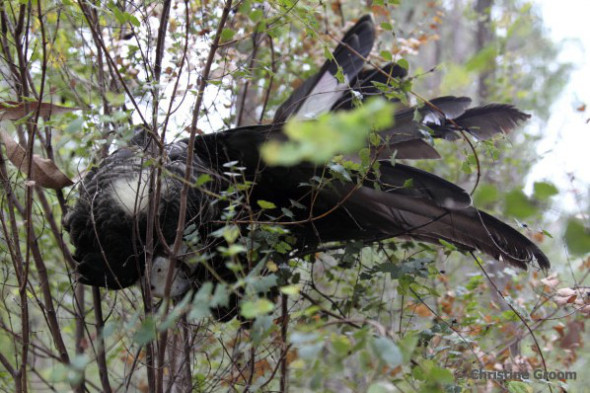
Shot by an orchard grower, this Carnaby was one of Christine Grooms birds in her study. The bird had her identification on it.
The Black-Cockatoo is now classified in Western Australia as ‘rare or likely to become extinct’ and federally listed as Endangered. The last 50 years has seen a 50% decline in their population, and their range has been reduced by up to one-third.
It is one of three black cockatoos found in south west WA. The others are Baudin’s Black-Cockatoo and a subspecies of the Red-tailed Black-Cockatoo. These birds are endemic to the area, meaning that they are found nowhere else in the world. All three are threatened. Because cockatoos are long lived birds (up to 50 years in the wild) and they raise few chicks to adulthood, it is highly likely that the birds we see today are an ageing population. Therefore, it is essential that we protect remaining habitat as well as the birds themselves for the survival of the species.
Highly Valuable On The Black Market
Australia’s seven black cockatoo species are highly sought after, with some individual birds fetching up to $30,000.
A 55 year old Western Australian man was reported to authorities after he was spotted stealing a chick from an endangered black cockatoo’s nest hollow, high in a nearby salmon gum tree.
“He literally didn’t think he was doing the wrong thing,” says Nicole White, a conservation scientist studying black cockatoos at Perth’s Murdoch University who identified the bird species. “He was saying: ‘There are plenty of them around. Why can’t I have one?'”
Then the officers heard squawking coming from the neighbour’s yard where, upon investigating, they found a further 14 red-tailed black cockatoos (Calyptorhynchus banksii), Carnaby’s black cockatoos (Calyptorhynchus latirostris) and galahs - most of which require a licence. The neighbour, 59-year-old Herbert Edward Kenyon, was illegally trading thousands of dollars worth of birds and was caught red-handed.
Wildlife theft is a massive, complex and nebulous beast. It ranges from individuals taking the odd bird as a pet, through to organised trafficking by international crime syndicates. Experts have no firm grasp on the size of the problem, but they are certain it poses risks to biodiversity.
Although poaching in itself, doesn’t seem to be directly threatening any Australian species with extinction, it “has the potential to severely affect the sustainability of wild populations”, says David O’Sullivan of Customs and Border Protection in Canberra. “The Australian Government takes the illegal trade of wildlife in Australia very seriously.”
Australia’s seven black cockatoo species are highly sought after, with some individual birds fetching up to $30,000.
And where there’s big demand, there are big profits. According to a report released in February 2011 by the not-for-profit Global Financial Integrity organisation, the illegal wildlife trade is third only to that in drugs and human trafficking in scope and value; numbers in the order of tens of billions of dollars are bandied about, but the true value has not been quantified.
“We’ve never put a figure on it,” says John Scanlon, an Australian who is secretary-general of the UN’s Convention on International Trade in Endangered Species (CITES), based in Geneva. “We know it’s a multi-billion dollar business, but we’ve never had the research to have enough confidence in a figure.”
Much of the global trade in endangered species is accounted for by tourist souvenirs, traditional medicine and bushmeat, John says, but live animals are the most lucrative. Like any collector’s market, rare and unusual forms are the most valuable, meaning that the most endangered species are also the most highly prized. But profit margins are “impossible to summarise”, he says. “Depending upon the form of wildlife, they can be huge. We’ve known of a single falcon selling for $200,000.”
In Australia, Customs and Border Protection is the primary authority that detects and monitors the wildlife trade and enforces the law at the borders. In the 2009-10 financial year, customs seized plants or animals and their products on 4014 occasions - but whether that represents a small or large fraction of all smuggling attempts is unknown.
The majority of items are souvenirs confiscated from holidaymakers who are oblivious to the problem, David says. A smaller number of live animals are smuggled via the “extremely inhumane” organised trade, he says.
Our native animals tend to be exported live, with all the associated problems of smuggling living, breathing, moving creatures. It’s one reason that reptiles and snakes are preferred contraband; they are resilient and quiet.
In fact, the younger the better - bird and reptile eggs are small and easy to transport. Animals or eggs can be strapped against the body of a smuggler, hidden in luggage, or even mailed through the post. Customs has found spiders in film canisters, pythons in garden pots, birds stuffed in plastic tubes, lizards stitched into luggage, and eggs fitted in purpose-built vests (up to 50 eggs, in one case).
These distressing methods of transport can cause animals to become dehydrated, starve or die a slow death. And if smugglers think they’ve been caught, they may cruelly “kill or destroy their specimens in an attempt to escape detection and prosecution”, David says.
In 2006, customs apprehended a man smuggling 24 cockatoo and galah eggs onto a plane. Before they could stop him, he smashed all but two of the eggs, which were hidden in a purpose-built vest.
While some intercepted animals make it to zoos or wildlife centres, many have to be euthanased because of their poor condition or biological threat they pose. Even native species will be destroyed if their original habitat can’t be determined, says Keith Larner, a wildlife compliance officer in Victoria’s Department of Sustainability and Environment.
“We don’t know what diseases they’ve been exposed to, so we’re reluctant to take them back to a wild population.” Another problem is the mixing of genes between isolated populations of a species. “We prefer animals go back to the exact spot so we don’t contaminate the gene pool,” he says.
Regulations To Stop Illegal Wildlife Trade
Australia, like all 175 signatories, is bound by CITES regulations. The international body, established in 1975, manages the global lists of flora and fauna that can be traded, and under what conditions.
About 34,000 species are protected by CITES. Globally, 600 animals are listed on Appendix I and a further 4400 on Appendix II. In Australia, 67 types of plant and animal - such as orange-bellied parrots and dugongs - are on Appendix I, and 958 - such as Carnaby’s cockatoos and echidnas - are on Appendix II.
DNA forensics - Keeping Track Of World’s Species
Wildlife forensics is an emerging tool providing that proof, but this highly specialised field is only practised in a few museums and small, university-based laboratories.
DNA’s real power, though, is in helping to regulate the licensing system by ensuring species recorded in logbooks are legitimate. Nicole has spent the past four years of her PhD project collecting DNA from Carnaby’s cockatoo chicks (Calyptorhynchus latirostris) to develop a world-first provenance database. “It’s a species that is regularly poached and traded. So there was a need for urgent action.
“Previously, if a wildlife officer was suspicious of someone, and we didn’t have the DNA…they were virtually powerless in proving that that animal held by that person was illegally taken or illegally bred.”
Nicole can even determine whether a bird is wild or captive, and the rough location it came from. After the 2008 Morawa raid authorities used Nicole’s database to confirm the species of cockatoos illegally held by both the 55-year-old man and his wildlife-trading neighbour, Herbert Kenyon. This led to the successful prosecution of Herbert, who was fined $4500.
This painstaking work is yet to be reproduced, and it will be a long time before databases exist for other animals. Authorities are considering DNA sampling every animal for which owners seek a licence, but this must be legislated. “If we integrate some of the sampling into the licensing procedure, we could really make some good inroads into better policing,” Michael says.
Hundreds Fall From The Sky Dead
In a bizarre event in 2010, over one hundred Carnaby’s Black Cockatoos fell out of the sky dead near the southern coastal mining town of Hopetoun. Other species also dropped from the sky dead too.
A Perth newspaper said: “Rangers discovered more than 100 dead white-tailed black cockatoos near a Hopetoun golf course yesterday morning.
This morning at Munglinup, 75km east of Hopetoun, wildlife officers recovered a further 37 dead white-tailed black cockatoos [Caranby’s Black Cockatoos], six regent parrots, two galahs, three mudlarks, three ravens, four yellow-throated miners and a kestrel.”
It appears the birds were poisoned, rather than suffering heat stroke in high temperatures.
The deaths have been labelled ‘devastating’ for Carnaby’s black cockatoo populations, which are being pushed to extinction from habitat clearing.
Birds of Australia Carnaby’s recovery manager Raana Scott said “It has potentially wiped out half the population of Carnaby’s black cockatoos in Munglinup (50km east of Hopetoun).”
“For birds that live for 50 years and don’t breed until they are 4-years-old and only have one chick a year with a high mortality rate, it is going to take a long time for the population there to recover – if they recover,” Ms Scott said.
Department of Environment and Conservation officers are investigating the deaths and cockatoos have been sent to Perth for biopsies. A department spokeswoman said soil, water and vegetation samples had been taken and would be sent to the WA Chemistry Centre.
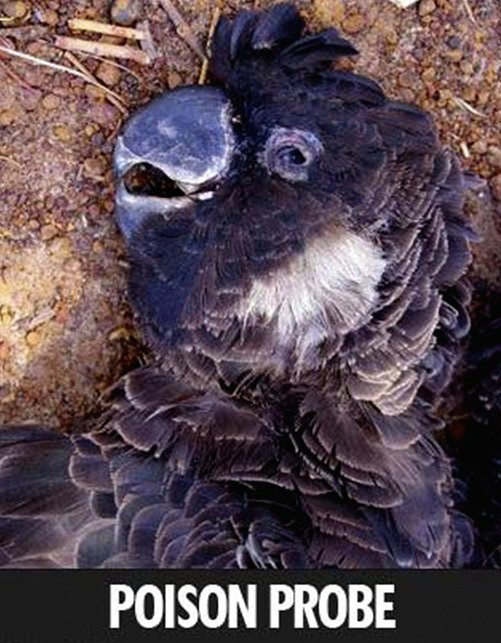 “There are a number of factors that may have contributed to the deaths, and DEC will undertake a rigorous investigation including autopsies, laboratory tests, site inspections and interviews with witnesses,” DEC Nature Protection Branch manager Kevin Morrison said in a statement today.
“There are a number of factors that may have contributed to the deaths, and DEC will undertake a rigorous investigation including autopsies, laboratory tests, site inspections and interviews with witnesses,” DEC Nature Protection Branch manager Kevin Morrison said in a statement today.
Lloyd Marshall, editor of Talking Birds newspaper, said it was highly unlikely that high temperatures had anything to do with the deaths of the parrots and cockatoos.
“Australian parrots and cockatoos can easily deal with temperatures around 50 degrees and I don’t think those temperature levels would cause stress resulting in death. In those situations the birds find a shady tree and sit still to conserve energy,”
“I have seen black cockatoos, including babies which are more vulnerable, sitting motionless in trees when temperatures were more than 47 degrees.”
“And to find so many birds dead in such a small area would have to point to poisoning, particularly near a golf course, where the birds could have consumed contaminated water,” he said (end of report.)
Carnaby’s Numbers Declining at 15% Per Year
A 2014 report has found Carnaby’s Black Cockatoos may die out in the Perth region within 15 years, prompting calls for the state and federal governments to protect remaining habitats.
The 2014 Great Cocky Count report by Birdlife Australia and Western Australia’s Department of Parks and Wildlife estimated the current rate of decline in the cockatoos’ population on the Perth-Peel coastal plain was 15 per cent per year.
The minimum count for the birds in the region was 7154, with 59 per cent of those found around the Gnangara Pine Plantation, north of Perth.
Birdlife Australia said the cockatoos had adapted to the pine plantations in the 1950s to survive the loss of 1,000 hectares of native bush around Perth each year. Pines ‘must be protected’ to save species.
But the group’s head of conservation, Samantha Vine, said 1,000 hectares of pine plantations around the city were also being cleared every year.
She said the State Government’s plan to completely clear the 23,000 hectare Gnangara Pine Plantation, to preserve the vital underground water source which lies beneath, would be catastrophic.
If this continues we’re likely to see extinction of the [Perth] population in the next 15 years.
Birdlife Australia’s Samantha Vine called on the Government to stop clearing pine until replacement trees were planted and matured and they want the Gnangara Pine Plantation referred for Commonwealth environmental assessment.
They have also written to the Federal Environment Minister, Greg Hunt, requesting the Government take action to prevent the extinction of the population.
State Opposition environment spokesman Chris Tallentire said this was further proof urgent action was needed to save the Carnaby’s cockatoos. “Despite repeated warnings, the Barnett Government has failed to act to protect feeding and roosting areas to save the species from extinction,” he said.
The federal Department of Environment website stated it was difficult to know how many Carnaby’s black cockatoos were left but it said it was known their populations had declined by more than 50 per cent in the past 45 years.
They no longer bred in up to a third of their former breeding sites in WA’s Wheatbelt region (ABC.)
Thank Goodness For People Who Care
Christine Groom is involved in the community survey known as the Great Cocky Count, where volunteers count Carnaby’s at night-time roost sites across the southwest of the state (Western Australia), on a single night; usually April 6th.
Christine Groom is a PhD candidate at the University of Western Australia in the School of Animal Biology. She also works as a Research Officer in the Species and Communities Branch of the Western Australian Department of Parks and Wildlife. Christine’s PhD project is on Carnaby’s Black Cockatoos, on the Swan Coastal Plain, Perth, Western Australia. Her project is titled “Roost site fidelity and resource use by Carnaby’s cockatoo on the Swan Coastal Plain”
“I will be investigating aspects of the ecology of Carnaby’s cockatoo to find out how they meet their basic survival requirements on the Swan Coastal Plain. For most living creatures basic survival involves finding food, water and shelter. For cockatoos this translates to finding somewhere to roost at night, a nest to raise young, enough food and somewhere safe to drink.
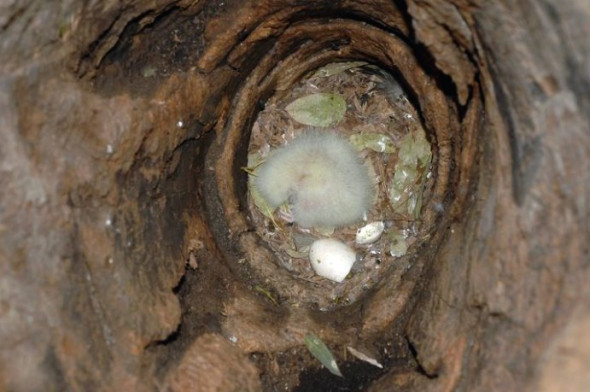
Carnaby’s chick inside it’s nest: Clutch 1–2 (usually only one young reared) and only the female incubates and broods the chick.
I’ll be using a combination of tail marking and tracking devices fitted to my study birds to observe or follow them and find out where they go to roost, feed and drink,” said Christine.
You Can Help!
You can help Carnaby’s Black-Cockatoo by using native plants in your garden, or when replanting your local reserve.
Once common across the south-west, Carnaby’s has been lost from over a third of its former range, and numbers have declined to 50% compared to the 1960s. Habitat clearance and degradation are major threats, and development is rapidly reducing their remaining habitat, particularly in the Perth area.
Urban gardens are becoming more important for supporting these beautiful birds. Find out more below about planting for Carnaby’s, including our new Perth-focussed nursery plant label ‘Choose for Black-Cockatoos’.
Planting for Carnaby’s Black-Cockatoo: ‘Choose for Black-Cockatoos’ plant selection, Phytophthora Dieback
Support the Black Cockatoo Preservation Society in their fight to stop the Caranby’s Black Cockatoo becoming extinct and lost forever.
Once their gone, their gone forever.
Thank you for reading,
Michele Brown.


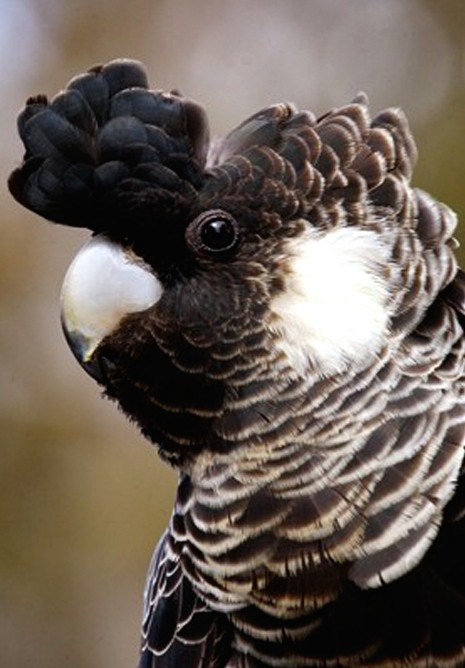
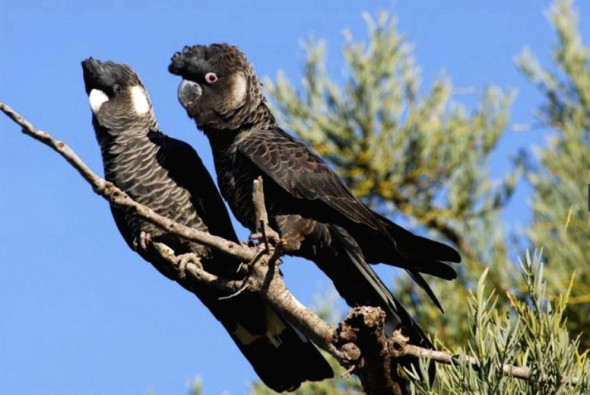
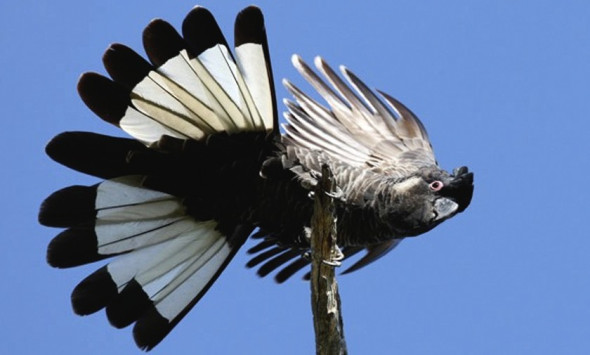
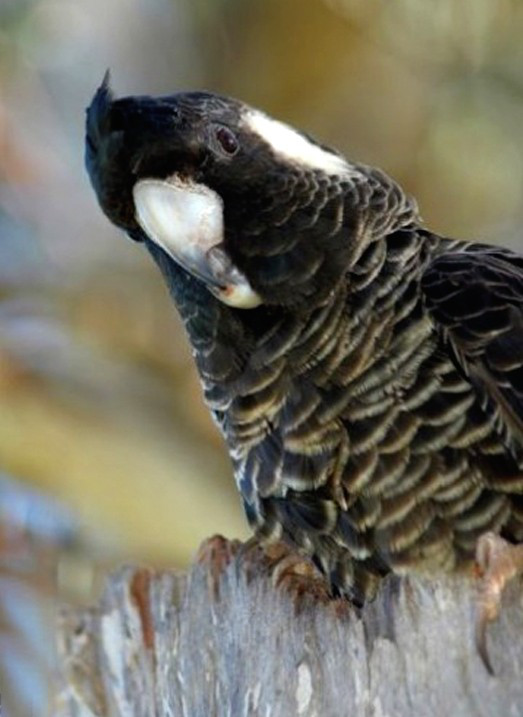
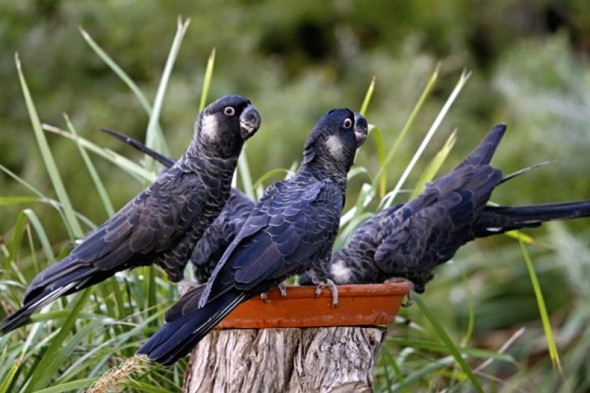
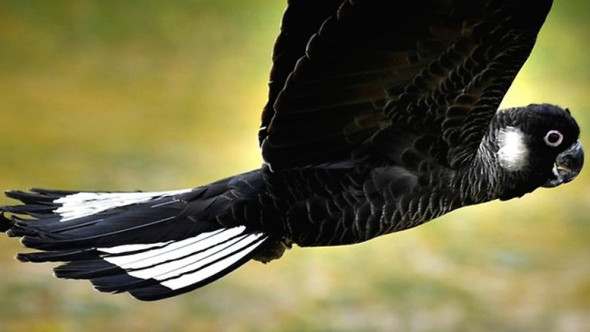
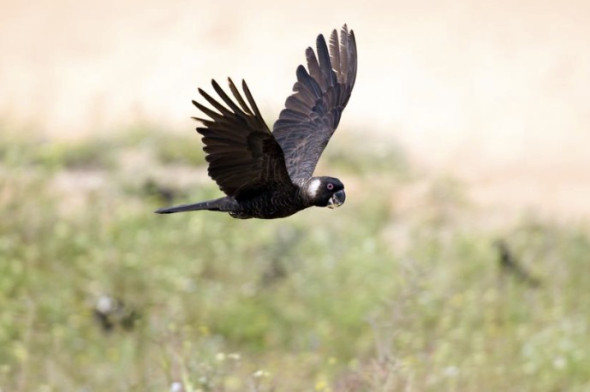










Thank you for your reply, should it merit a response we will respond in due course. This site is owned by International Animal Rescue Foundation and moderation is used.